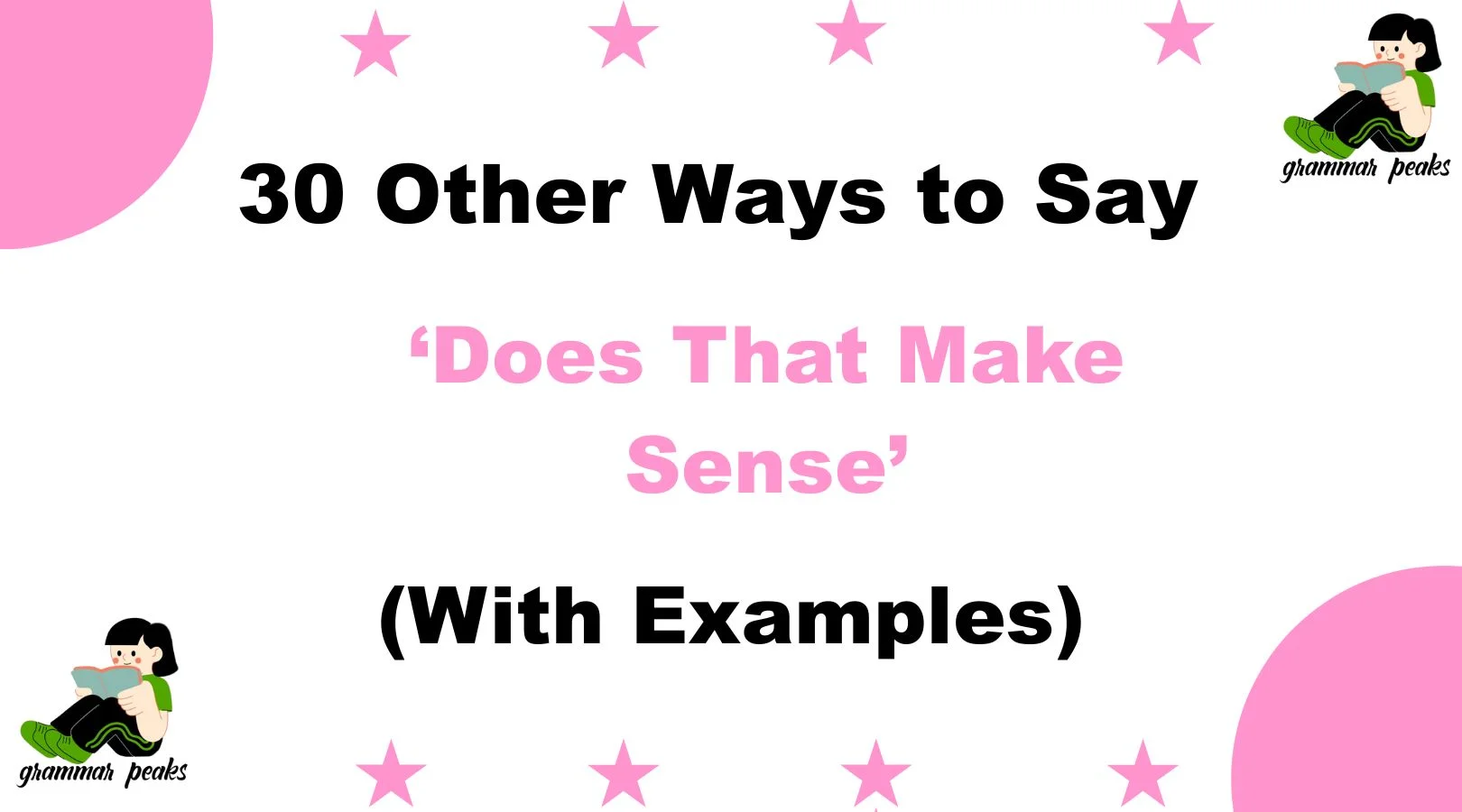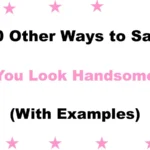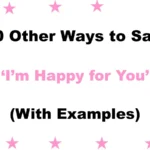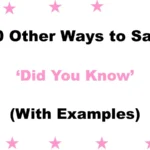Finding the right words to express care and clarity is essential in any conversation. When you ask someone if they understand you, the phrase “Does that make sense?” is common—but sometimes it can sound a bit blunt or repetitive. Using thoughtful alternatives can make your message feel more personal, warm, and empathetic.
This article explores 30 different ways to say “Does that make sense?” with detailed explanations, examples, and tips on when and how to use each one. Whether you’re in a professional setting or a casual chat, these alternatives will help you connect better and communicate clearly.
What Does “Does That Make Sense” Mean?
“Does that make sense?” is a question used to check if the other person understands what you’ve just explained. It invites feedback and confirms clarity. The phrase signals that you care about effective communication and are open to questions or clarifications.
When to Use “Does That Make Sense”
Use this phrase when you want to ensure your message is clear, especially after explaining something complex or important. It’s commonly used in teaching, business conversations, customer service, or any situation where clarity is critical.
Is It Professional/Polite to Say “Does That Make Sense”?
Yes, it is professional and polite but can sometimes feel a bit formal or repetitive if overused. Choosing warmer or more conversational alternatives can make your communication more engaging and less robotic.
Pros and Cons of Saying “Does That Make Sense”
Pros:
- Clearly invites feedback
- Helps prevent misunderstandings
- Shows you care about the other person’s comprehension
Cons:
- May sound mechanical or insincere if repeated too often
- Might feel abrupt in some contexts
- Can make some listeners feel put on the spot
Synonyms for “Does That Make Sense?”
- Do you get what I mean?
- Does that add up?
- Are you on the same page?
- Is that understandable?
- Do you see what I’m saying?
- Are you tracking so far?
- Is that making sense to you?
- Am I making myself clear?
- Does that work for you?
- Are we good so far?
- Are you catching myIs that clear?
- Do you follow?
- Are you with me?
- drift?
- Do you comprehend that?
- Does that sound right?
- Are you following along?
- Does that seem clear?
- Is that something you can grasp?
- Are you with me so far?
- Can you follow my logic?
- Does that resonate with you?
- Is that easy to understand?
- Does that strike a chord?
- Are you keeping up?
- Is that something you can relate to?
- Am I explaining this well?
- Does that click for you?
- Is that coming across clearly?
- Are you clear on that?
1. Is That Clear?
Definition: Asking if the information was understood without confusion.
Explanation: This is a straightforward way to check comprehension. It’s direct but polite.
Example: “I’ve explained the steps. Is that clear?”
Best Use: When you want a simple confirmation of understanding.
Worst Use: Avoid if it might come across as condescending.
Tone: Neutral, slightly formal.
2. Do You Follow?
Definition: A casual way to ask if the listener is keeping up with what you’re saying.
Explanation: This invites engagement and encourages questions.
Example: “We’ll start with the introduction, then the details. Do you follow?”
Best Use: Informal conversations or teaching moments.
Worst Use: Can feel patronizing if overused.
Tone: Casual, friendly.
3. Are You With Me?
Definition: Checking if the listener is staying engaged and understanding.
Explanation: This phrase is more informal and conversational.
Example: “So, after you finish that, you move to the next step. Are you with me?”
Best Use: Informal discussions, collaborative work.
Worst Use: Avoid in highly formal situations.
Tone: Warm, engaging.
4. Do You Get What I Mean?
Definition: Asking if the meaning behind your words is clear.
Explanation: This checks both understanding and emotional connection.
Example: “I think this is the best solution. Do you get what I mean?”
Best Use: Friendly conversations, brainstorming sessions.
Worst Use: May sound vague or unclear in formal settings.
Tone: Conversational, empathetic.
5. Does That Add Up?
Definition: Checking if the explanation logically makes sense.
Explanation: This phrase encourages critical thinking and agreement.
Example: “The expenses total $500. Does that add up?”
Best Use: Business meetings, analytical discussions.
Worst Use: Avoid if the listener may not be comfortable with direct questioning.
Tone: Professional, thoughtful.
6. Are You on the Same Page?
Definition: Asking if both parties have the same understanding or agreement.
Explanation: This phrase emphasizes shared understanding or alignment in ideas.
Example: “We’ll launch the campaign next week. Are you on the same page?”
Best Use: Team meetings, collaborative projects.
Worst Use: Can sound confrontational if used incorrectly.
Tone: Professional, inclusive.
7. Is That Understandable?
Definition: Checking if the information was easy to comprehend.
Explanation: This phrase is gentle and focuses on the clarity of the explanation.
Example: “Here’s the process for submitting reports. Is that understandable?”
Best Use: Teaching, customer support.
Worst Use: Might seem vague in fast-paced conversations.
Tone: Polite, caring.
8. Do You See What I’m Saying?
Definition: Asking if the listener grasps the point you’re making.
Explanation: This phrase invites empathy and shared perspective.
Example: “This approach will save us time. Do you see what I’m saying?”
Best Use: Informal discussions, persuasive talks.
Worst Use: Could be unclear in formal communication.
Tone: Conversational, friendly.
9. Are You Tracking So Far?
Definition: Checking if the listener is following the information up to this point.
Explanation: It implies ongoing communication and encourages real-time feedback.
Example: “We’ve covered the budget and timeline. Are you tracking so far?”
Best Use: Training sessions, long explanations.
Worst Use: May sound too informal in professional settings.
Tone: Casual, supportive.
10. Is That Making Sense to You?
Definition: Confirming if the explanation is clear from the listener’s perspective.
Explanation: Slightly softer version of “Does that make sense?”
Example: “We need to submit the form by Friday. Is that making sense to you?”
Best Use: One-on-one conversations, coaching.
Worst Use: Could sound repetitive if used frequently.
Tone: Warm, conversational.
11. Am I Making Myself Clear?
Definition: Asking if your message is unambiguous.
Explanation: This is more direct and can sometimes sound authoritative.
Example: “The deadline is non-negotiable. Am I making myself clear?”
Best Use: When setting firm boundaries or instructions.
Worst Use: Avoid sensitive audiences; may feel harsh.
Tone: Firm, authoritative.
12. Does That Work for You?
Definition: Asking if the explanation or plan is acceptable and clear.
Explanation: This phrase also checks for agreement alongside understanding.
Example: “We’ll meet on Tuesday afternoon. Does that work for you?”
Best Use: Scheduling, negotiating.
Worst Use: Not ideal for confirming complex instructions.
Tone: Polite, collaborative.
13. Are We Good So Far?
Definition: Casual way to check if everything is clear up to the current point.
Explanation: It conveys a friendly, informal tone.
Example: “We’ve completed the first two steps. Are we good so far?”
Best Use: Informal meetings or discussions.
Worst Use: Too casual for formal or written communication.
Tone: Friendly, relaxed.
14. Are You Catching My Drift?
Definition: Informal phrase to check if the listener understands the general idea.
Explanation: It’s playful and sometimes used humorously.
Example: “We’ll need to speed things up. Are you catching my drift?”
Best Use: Casual conversations among peers.
Worst Use: Inappropriate in formal or serious contexts.
Tone: Casual, playful.
15. Do You Comprehend That?
Definition: Asking if the listener fully understands the content.
Explanation: More formal and less commonly used in everyday speech.
Example: “The contract terms are outlined here. Do you comprehend that?”
Best Use: Legal or academic settings.
Worst Use: Sounds stiff or old-fashioned in casual use.
Tone: Formal, serious.
16. Does That Sound Right?
Definition: Asking if the explanation seems accurate or reasonable.
Explanation: This phrase invites agreement and understanding.
Example: “So, we will deliver by Thursday. Does that sound right?”
Best Use: Confirming plans or facts.
Worst Use: Less suitable for checking comprehension of complex info.
Tone: Friendly, collaborative.
17. Are You Following Along?
Definition: Checking if the listener is keeping pace with the information.
Explanation: This phrase implies a progressive explanation.
Example: “I’ll explain the first part, then the rest. Are you following along?”
Best Use: Presentations, instructions.
Worst Use: May feel condescending if overused.
Tone: Supportive, conversational.
18. Does That Seem Clear?
Definition: Asking if the explanation is clear and understandable.
Explanation: Slightly formal but polite.
Example: “The policy is outlined here. Does that seem clear?”
Best Use: Professional communication.
Worst Use: Can sound detached or impersonal.
Tone: Neutral, polite.
19. Is That Something You Can Grasp?
Definition: Asking if the listener can mentally understand the concept.
Explanation: This phrase is gentle but may sound slightly informal.
Example: “The idea might be complex. Is that something you can grasp?”
Best Use: Teaching or mentoring.
Worst Use: Avoid if it might imply the listener is slow.
Tone: Caring, empathetic.
20. Are You With Me So Far?
Definition: Informal way to check comprehension up to this point.
Explanation: This encourages interaction and signals ongoing explanation.
Example: “We have three main steps. Are you with me so far?”
Best Use: Casual or semi-formal explanations.
Worst Use: Too informal for highly professional settings.
Tone: Warm, engaging.
21. Can You Follow My Logic?
Definition: Asking if the reasoning makes sense to the listener.
Explanation: Focuses on understanding the thought process.
Example: “The numbers don’t add up because of this. Can you follow my logic?”
Best Use: Analytical discussions, problem-solving.
Worst Use: Can sound complex for general conversations.
Tone: Professional, thoughtful.
22. Does That Resonate With You?
Definition: Asking if the explanation feels meaningful or relevant.
Explanation: This phrase appeals to emotional understanding.
Example: “I believe this solution fits our values. Does that resonate with you?”
Best Use: Motivational talks, relationship building.
Worst Use: Too abstract for technical info.
Tone: Empathetic, warm.
23. Is That Easy to Understand?
Definition: Checking if the explanation is simple and clear.
Explanation: Emphasizes simplicity in communication.
Example: “Here’s the summary. Is that easy to understand?”
Best Use: Teaching, customer service.
Worst Use: Might sound patronizing if the listener is knowledgeable.
Tone: Polite, helpful.
24. Does That Strike a Chord?
Definition: Asking if the message emotionally connects.
Explanation: This checks emotional impact rather than just comprehension.
Example: “Our mission is to help families. Does that strike a chord?”
Best Use: Inspirational talks, storytelling.
Worst Use: Not suitable for factual instructions.
Tone: Warm, emotional.
25. Are You Keeping Up?
Definition: Informal way to check if the listener is following the pace.
Explanation: Implies active listening and engagement.
Example: “It’s a lot of information. Are you keeping up?”
Best Use: Fast-paced explanations.
Worst Use: Can sound impatient if used incorrectly.
Tone: Casual, direct.
26. Is That Something You Can Relate To?
Definition: Asking if the listener can personally connect with the idea.
Explanation: Focuses on shared experiences and empathy.
Example: “I’ve faced similar challenges. Is that something you can relate to?”
Best Use: Counseling, peer discussions.
Worst Use: Not suitable for objective or technical talks.
Tone: Empathetic, conversational.
27. Am I Explaining This Well?
Definition: Self-check to ensure your explanation is effective.
Explanation: Invites feedback on your communication style.
Example: “Let me know if I’m explaining this well.”
Best Use: Coaching, mentoring.
Worst Use: Overuse may seem insecure.
Tone: Humble, open.
28. Does That Click for You?
Definition: Asking if the information suddenly becomes clear.
Explanation: Implies an “aha” moment or sudden understanding.
Example: “When you connect these points, does that click for you?”
Best Use: Teaching, problem-solving.
Worst Use: Can feel informal in serious settings.
Tone: Friendly, encouraging.
29. Is That Coming Across Clearly?
Definition: Checking if your message is being understood as intended.
Explanation: Focuses on effective communication.
Example: “I want to make sure my point is clear. Is that coming across clearly?”
Best Use: Presentations, sensitive conversations.
Worst Use: Too wordy for quick chats.
Tone: Polite, thoughtful.
30. Are You Clear on That?
Definition: Confirming understanding and clarity.
Explanation: Direct and to the point, but polite.
Example: “You’ll submit the report by Monday. Are you clear on that?”
Best Use: Instructions, deadlines.
Worst Use: Can sound strict if the tone is harsh.
Tone: Professional, firm.
Conclusion
Finding warm and thoughtful ways to ask if someone understands is key to effective communication. Each alternative to “Does that make sense?” carries its own nuance, tone, and best context. Using these phrases thoughtfully shows empathy, respect, and care for your listeners, making conversations more meaningful and inclusive. Whether in professional, casual, or educational settings, adapting your language to your audience’s needs will strengthen your connection and clarity.
Frequently Asked Questions
1. Why should I use alternatives to “Does that make sense?”
Using alternatives helps your communication feel more personalized, warm, and clear. It avoids sounding repetitive or dismissive and shows genuine care for your listener’s understanding.
2. When is it better to avoid saying “Does that make sense?”
Avoid it when the tone might come off as patronizing or impatient, especially in sensitive conversations. Using more empathetic alternatives can create a better connection.
3. How do I choose the right alternative phrase?
Consider the context, relationship, and tone you want to convey. For example, “Are you on the same page?” suits teamwork, while “Does that resonate with you?” works well for emotional or motivational talks.
4. Are these alternatives suitable for professional settings?
Yes! Many phrases like “Is that clear?” or “Are you following along?” are both professional and polite. Some alternatives are more casual, so choose based on your audience.
5. Can using varied phrases improve my communication skills?
Absolutely! Using varied expressions keeps your conversations engaging, clear, and respectful, which enhances mutual understanding and rapport.






